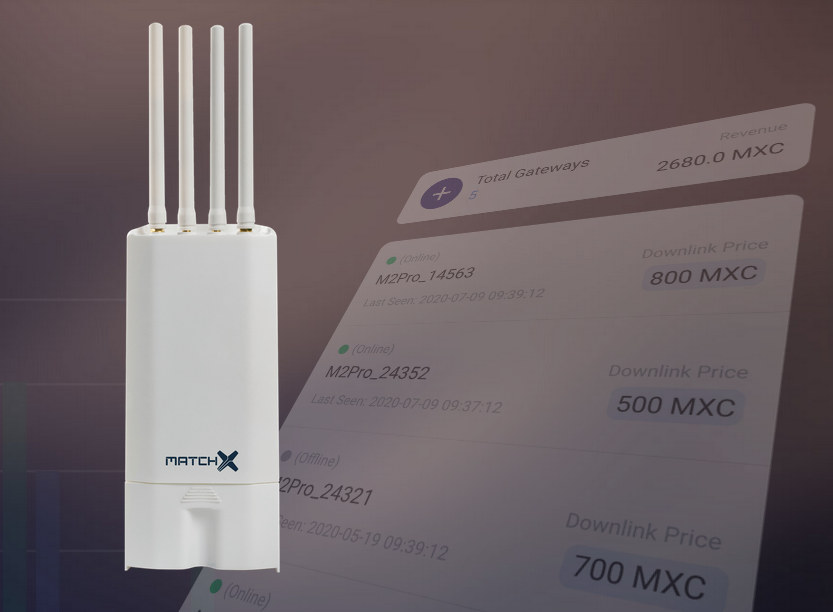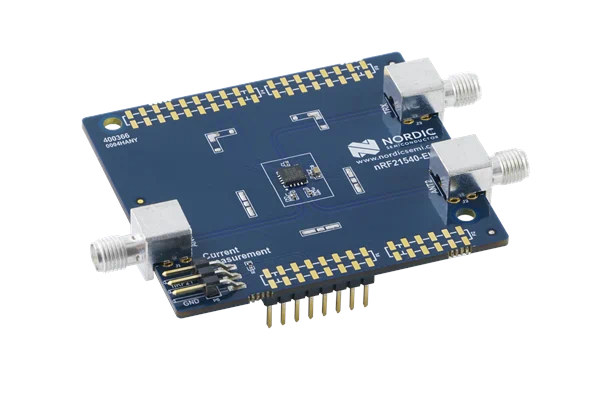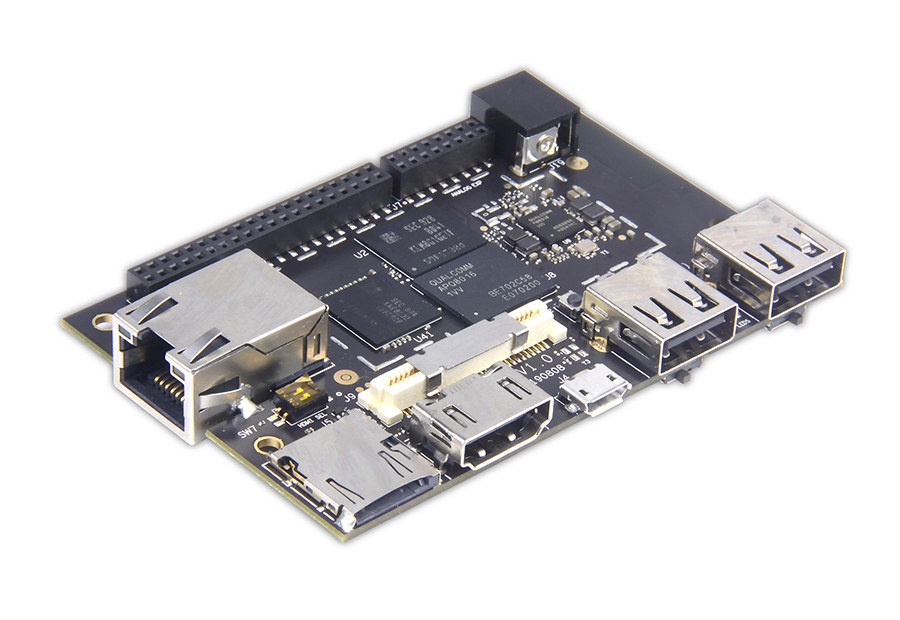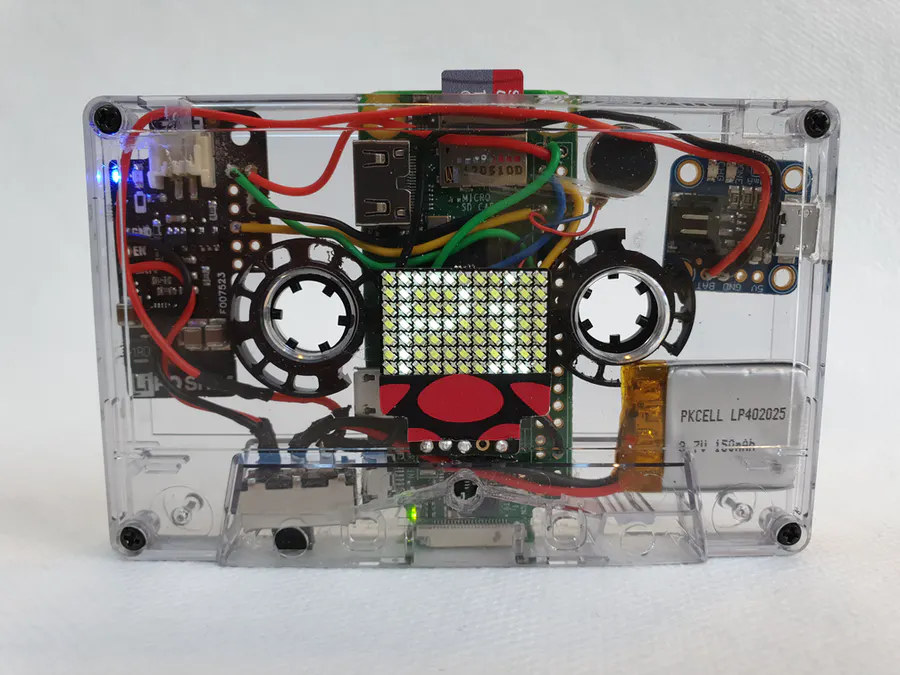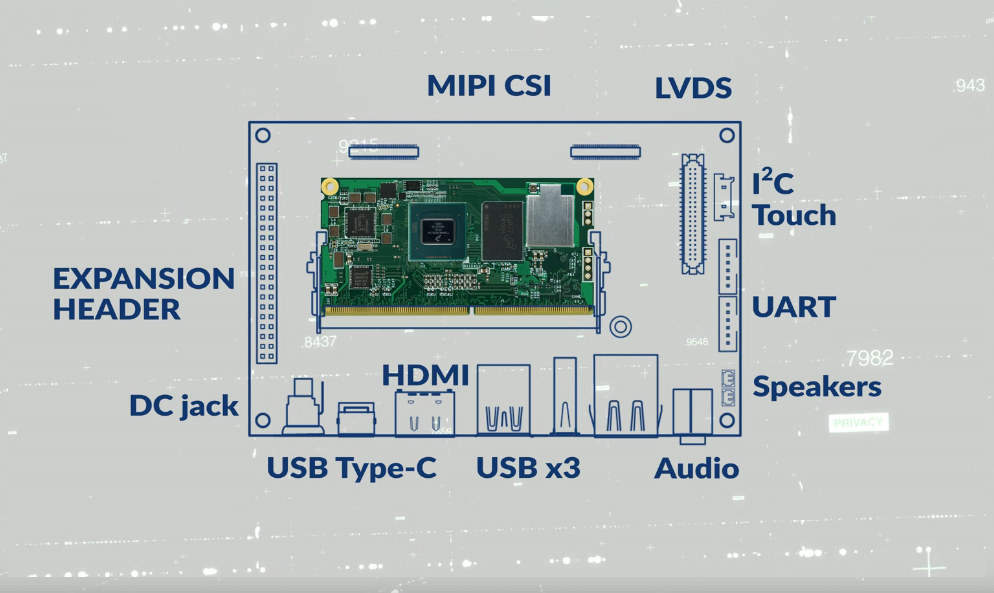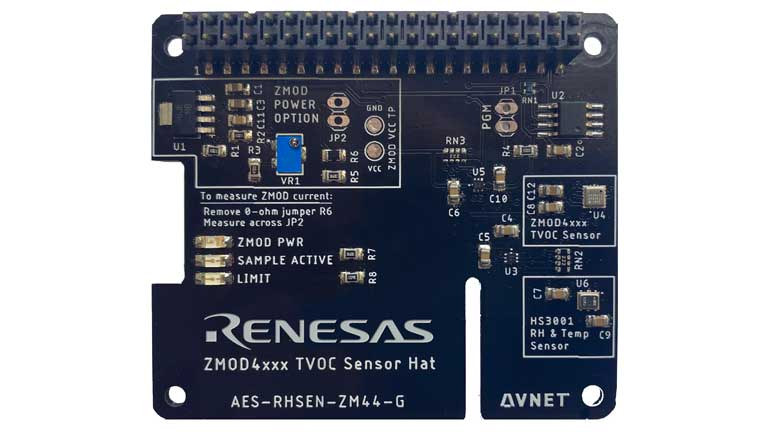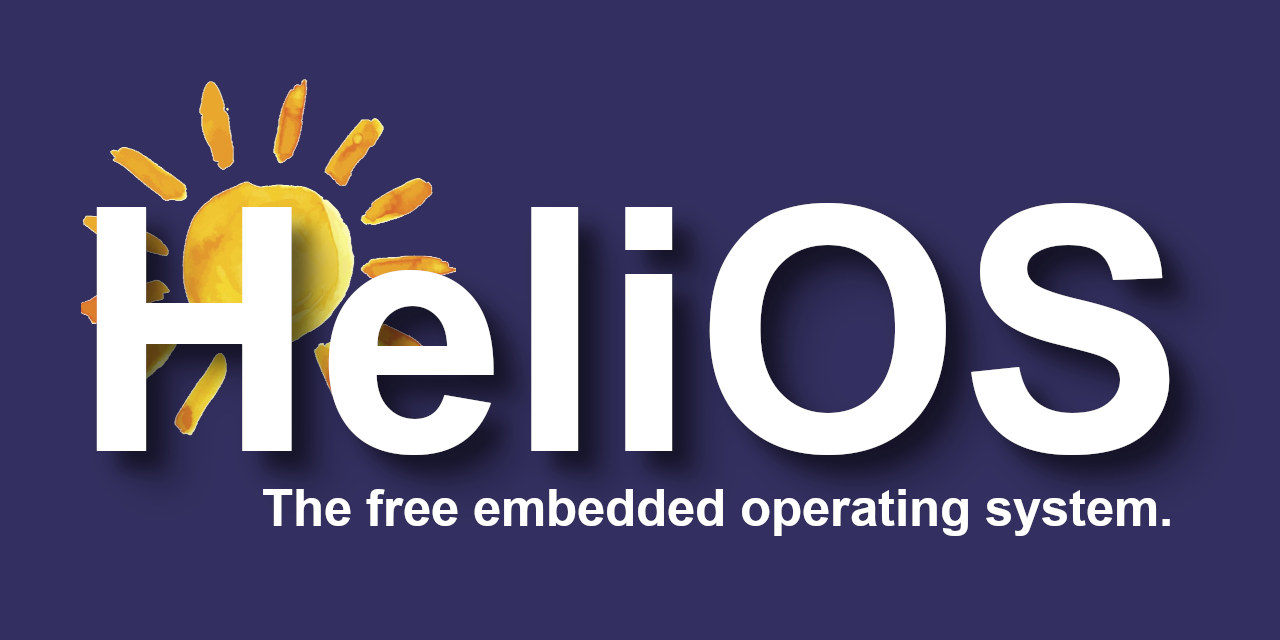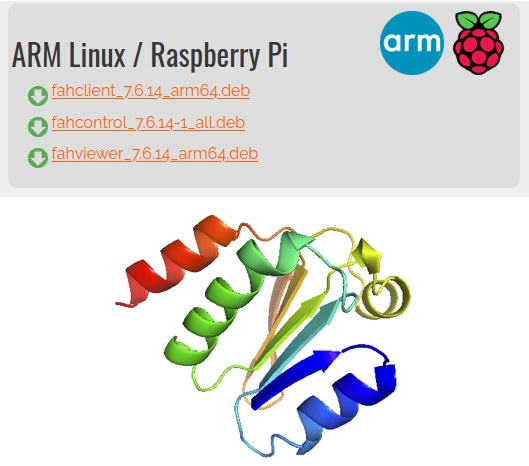A few years ago, I received MatchX.io MatchBoX outdoor LoRaWAN gateway for review, and eventually tested it with RAK811 LoRa tracker once I got a node to play with, and made sure I did not break any local laws. But now the company has come up with an unusual gateway with its MatchX M2 Pro LPWAN Crypto-Miner that acts as a traditional LoRaWAN gateway, as well as a cryptocurrency miner. I’m a bit perplexed by the solution as miners are notoriously power-hungry, but let’s have a look. MatchX M2 Pro specifications: SoC – NXP i.MX 6UL (MCIMX6G2CVM05AB) single-core Arm Cortex-A7 processor @ up to 528MHz System Memory – 256MB DDR3 RAM Storage – 256MB NAND FLASH, optional SSD up to 32GB or industrial SD-Card Networking & Wireless Connectivity LoRa Radio – SX1302 chipsets, 16 frequency channels Supports EU868, US915, AS920, AS923, AU915, KR920, IN865 regions 2.4Ghz 802.11b/g/n WiFi 4 GPS […]
Nordic Semi nRF21540 RF front end module Extends the Range of nRF52/nRF53 Bluetooth SoC’s
A little while ago, we wrote about RFCat N32 board integrating Meshtek-H52 module with nRF52832 2.4GHz multi-protocol SoC and a Skyworks power amplifier increasing power by up to 30 times to extend the wireless range to up to 200 meters. It turns out Nordic Semi outed its own range extender module late last year with nRF21540 RF front end module (FEM) that integrates a power amplifier (PA) and low noise amplifier (LNA) optimized to boost the link budget of the nRF52 and nRF53 multi-protocol wireless SoCs. nRF21540 key features and specifications: Supported wireless standards Bluetooth Low Energy (incl. Bluetooth mesh) Thread and Zigbee (802.15.4) Proprietary 2.4 GHz Output Power – Adjustable in small increments up to +21 dBm Receive Gain – +13 dB with 2.5 dB noise figure Antennas – 2x antenna ports for antenna diversity Host Interface – I/Os, SPI, or a combination Supply Voltage – 1.7 V to […]
Developer Board 4 V3 Brings Gigabit Ethernet to 96Boards Snapdragon 410E SBC
The original 96Boards CE compliant Dragonboard 410c development board launched in 2015 was followed by Geniatech Developer Board IV the following with many of the same features plus the addition of a Fast Ethernet port and an RTC battery, and an 85x60mm form factor all of which made it non-compliant with the 96Board specs. Geniatech has now introduced a new Developer Board 4 V3 version, that like the V2 model integrates a Gigabit Ethernet port and WiFi 5 connectivity, but the design has been modified get closer to 96Boards CE compliance with 85x54mm dimensions, and the same ports’ arrangement as on 96Boards CE boards, excluding the Ethernet RJ45 jack that is out of (96Boards CE) specs. Geniatech Developer Board 4 V3 specifications: SoC – Qualcomm Snapdragon 410E (APQ8016E) quad-core ARM Cortex A53 processor @ 1.2 GHz with Adreno 306 GPU System Memory – 1 or 2 GB LPDDR3 @ 533MHz […]
Using an Old Cassette Tape to Enclose a Battery-powered Raspberry Pi Zero
If you’re old enough you may have a stock of old cassette tapes that may or may not work anymore. The good news is that if you have time on your hands, you could recycle those as a Raspberry Pi Zero enclosure, including even other components like a small battery, battery charging board, and display. That’s exactly what Martin Mander did with his Cassete Pi IoT scroller project that receives notifications via IFTTT service and displays them as scrolling text on a small display connected to the Raspberry Pi Zero W. Here’s the detailed list of components used in this project: Raspberry Pi Zero Wireless Pimoroni LiPo SHIM LiPo/LiIon power supply shim for Raspberry Pi boards Adafruit Micro Lipo charger board with micro USB port Pimoroni 11×7 LED Matrix 150 mAh Li-Polymer Battery Cassette Tape DPDT Slide Switch Vibration motor Once assembly is done, you can flash a Micro SD […]
Wandboard 8MPLUS SBC Gets NXP i.MX 8M Plus SoC with 2.3TOPS NPU
TechNexion Wandboard Dual was one of the first Freescale i.MX 6 single board computers when it launched in early 2013 and the company has introduced a few more models over the years including Wandboard QuadPlus in 2017. TechNexion is now working on a new version called Wandboard 8MPLUS powered by the recently announced NXP i.MX 8M Plus SoC that features a built-in 2.3 TOPS NPU for AI acceleration. Wandboard 8MPLUS preliminary specifications: EDM System-on-Module SoC – NXP i.MX8M Plus quad-core Arm Cortex-A53 processor @ up to 1.8 GHz, Arm Cortex-M7 real-time core @ up to 800 MHz, Vivante GC7000UL 3D GPU, Vivante GC520L 2D GPU, HiFi 4 audio DSP, and 2.3 TOPS Neural Processing Unit (NPU) System Memory – 2GB or 4GB LPDDR4 Storage – 32GB eMMC flash Video Decode – HD (1080p +720p) Video Encode – 1080p60 H.265, H.264 260-pin EDM Type G board-to-board connector Debugging – JTAG Interface […]
Renesas ZMOD4410 Indoor Air Quality HAT for Raspberry Pi Measures VOC, Humidity, and Temperature
We’ve recently covered a few products or solutions designed to report indoor air quality (IAQ) including ESPurna firmware getting support for BME680 precise indoor air quality measurements and Metriful Sense indoor environment monitor for Arduino and Raspberry Pi. Avnet has now introduced its own Raspberry Pi IAQ add-on board with “Renesas ZMOD4410 Indoor Air Quality HAT for Raspberry Pi” capable of measuring VOC (volatile organic compounds), humidity and temperature, as well as estimating carbon dioxide (eCO2) levels. Renesas ZMOD4410 TVOC Sensor Hat (AES-RHSEN-ZM44-G) key features and specifications: Sensor – Renesas ZMOD4410 TVOC / IAQ I2C sensor, Renesas HS3001 relative humidity & temperature I2C sensor Misc – Power LED; software-controlled status LEDs for “sample active” and “limit” Host Interface – 20-header for Raspberry Pi with configurable alarm/interrupt output Power Supply via header Jumper for supply voltage selection between 1.75V and 3.9V (default: 3.3V) Test points to measure ZMOD4410 current consumption Avnet […]
HeliOS is a Tiny Embedded OS Designed for Arduino Boards
Mannie Peterson (aka FellFromTree) has developed an embedded operating system called HeliOS that’s designed specifically for 8-bit and 32-bit Arduino boards, and can easily be used from the Arduino IDE. HeliOS is said to have only 21 function calls and implements cooperative and event-driven multitasking, task notification/messaging, timers, and memory management. It’s a non-preemptive multitasking kernel so you won’t have to deal with mutexes. The developer explains how scheduling works with HeliOS: HeliOS uses a run-time balanced strategy which ensures tasks with shorter run-times are prioritized over tasks with longer run-times. This ensures all running tasks receive approximately equal total run-time without using context switching. The other multitasking option available in HeliOS is event driven multitasking, which uses the wait/notify and timer interfaces. Mixing cooperative and event driven tasks in HeliOS is not a problem. To give it a try, simply open the Arduino IDE Library Manager, search for “HeliOS” […]
Folding@Home ARM64 Linux Beta Release for COVID-19 Vaccine Research
A few months ago, we reported that Rosetta@Home supported 64-bit Arm SBC’s and Servers in the Fight against COVID-19. But Folding@home did not support Arm hardware just yet, but thanks to work from Neocortix, Linaro, Arm, miniNodes, and Packet.com, we now get support for Folding@home on ARM64 meaning you can help researchers studying SARS-CoV-2 virus and help them develop a COVID-19 vaccine with Raspberry Pi 3/4 boards, or other 64-bit Arm SBC’s and servers. The solution relies on Neocortix Cloud Services Platform allowing the unused capacity of large numbers of individual mobile phones or other connected nodes to be harnessed into a single, unified computational engine. The very first application that made use of the platform was Neocortix PhonePaycheck were users get paid to let businesses perform calculations on their phones at night while charging and connected to WiFi. That way users of premium phones like Galaxy S10 or S20 […]


